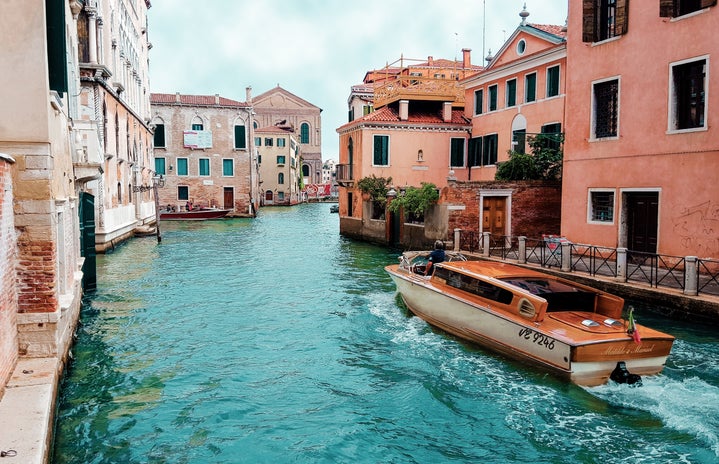Taking a trip on a cruise ship is luxurious. Above the water, passengers sail comfortably and make destination stops at the most beautiful places on earth— but at what cost? While over the past 30 years Venice, Italy has become a hotspot for cruises, the surrounding environment has suffered tremendously. Released beneath the water’s surface, fuel emissions and other pollutants from these mammoth ships poison the water and disrupt ecosystems. Murky waters abound, there is oily residue on gondolas, leaving an ecosystem barely capable of sustaining living beings. In the interest of being transparent, many of the city’s shops are small businesses, and without tourists brought in by cruises, economic decline is a real threat. However, cruise ship vacations are characterized by day-tripping tourism where tourists move quickly throughout an area and regularly neglect to interact with local businesses, opting for corporate, commercialized souvenirs and treats. This means the ethical dilemma between endangering Venetian families’ livelihoods by suggesting the end of cruise tourism, or keeping the status quo and risking environmental degradation does not hold up, as the local economy seldom benefits from day-tripping tourism. Hence, the goal here is to look at how the stop in cruise tourism in Venice due to the COVID-19 pandemic has impacted the environment.
The environmental degradation caused by cruises is substantial. Especially in Venice, small canals are able to harbor mass amounts of pollution, not only from fuel emissions but also the results of over-tourism leading to more strain put onto the fragile bones of the historic city. During a 2011 study, scientists found that the average daily amount of gas emitted by ships of medium to large size into the Guidecca Channel was evaluated at about 205 kg for sulfur dioxide or 451.1948 pounds, and 284 kg for nitrogen dioxide, or 626.113 pounds (Premuda sc.4). The results of this experiment are critical to this conversation because “sulfur dioxide emissions from ships can further ocean acidification with a rate that is twofold with respect to that caused by carbon dioxide (CO2) emission,” and NO2 can “interact with water, oxygen and other chemicals in the atmosphere to form acid rain and contributes to nutrient pollution in coastal waters” (“Basic Information about NO2”). Rising ocean acidification and nutrient pollution in the Guidecca Channel and other bodies of water around Venice lead to the degradation of the foundations of the city, and significantly threaten the sustainability of the water’s ecosystems.
However, with the stop of tourism because of the COVID-19 pandemic, new environmental impact studies were able to occur. In late March/early April in particular, Italy was hit harder than any other European nation by the virus. As a result, the country went on a strict lockdown for approximately two months. The complete reduction of travel allowed the waters around Venice to clear up. Mineral and fuel exhaust build-up had started to dissipate, and hundreds of news sources reported how the bottom of the canal was now visible (Brunton 11). However, it is not only pollution lessening that makes the water look cleaner; it is the fact that without motors from ships stirring up sediment from the bottom of the canal, it all began to settle. After only a week under lockdown, the Guidecca Channel saw the return of many fish species. Locals had also started noting that ducks and swans began to nest along the banks of the canal. Thus, it became clear how much the area could benefit from less traffic along the channels; there would be clear water and a more diverse, balanced ecosystem.
When tourists started coming back to Venice in June, locals began to protest, creating a human chain against the return of mass tourism. Later in August, the MSC Grandiosa was the first cruise to venture back into the Mediterranian after the initial two-month lockdown. Carrying around 3,000 passengers, this cruise took advantage of day-tripping tourism. This type of tourism does not benefit the local economy and only intensifies the environmental degradation of Venice. Most recently, anti-tourism protests remain a prevalent event in Venice as locals have seen the benefits of emitting major cruise tourism.

